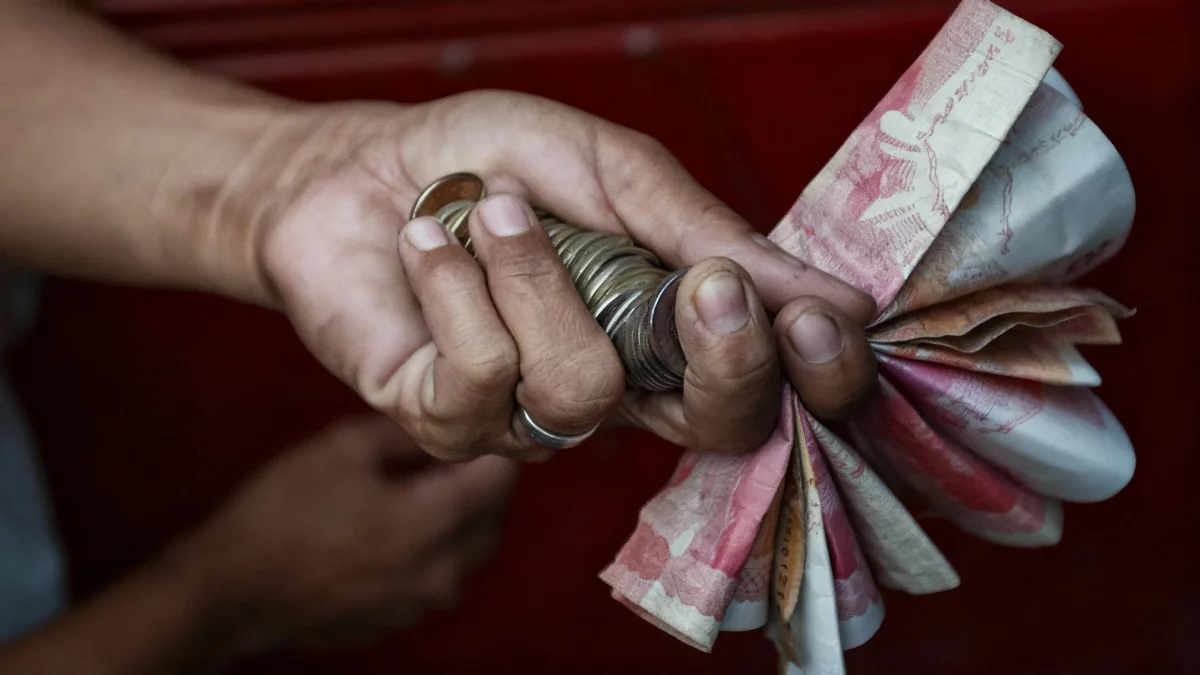The Philippine central bank is allowing market forces to determine the exchange rate of the peso against the U.S. dollar. This move comes as the local currency recently reached a record low. Officials state that strong remittances from overseas workers and robust economic growth are expected to provide underlying support for the peso.
The Bangko Sentral ng Pilipinas (BSP) clarified its stance, emphasizing that its participation in the foreign exchange market is primarily to mitigate significant inflationary swings, not to prevent daily fluctuations. This approach signals a shift towards a more hands-off policy regarding the peso's immediate valuation.
Key Takeaways
- The Philippine central bank is letting market forces determine the peso's exchange rate.
- The central bank intervenes mainly to dampen inflationary swings, not daily volatility.
- Strong remittances and economic growth are seen as key supports for the peso.
- The peso recently fell to a new record low against the U.S. dollar.
Central Bank's Stance on Exchange Rate
The Bangko Sentral ng Pilipinas (BSP) has stated its commitment to a market-determined exchange rate. This means that the value of the peso against other currencies, particularly the U.S. dollar, will largely be set by supply and demand dynamics in the foreign exchange market.
A central bank official explained the policy:
"The Bangko Sentral ng Pilipinas allows the exchange rate to be determined by market forces. When we do participate in the market, it is largely to dampen inflationary swings in the exchange rate over time rather than to prevent day-to-day volatility."This statement highlights a focus on long-term price stability over short-term currency movements.
Fact Check
- The Philippine peso hit a new record low recently.
- Remittances from overseas Filipino workers (OFWs) are a significant source of foreign currency.
- The country's economic growth rate is considered robust, providing fundamental support.
Factors Influencing the Peso's Value
Several factors contribute to the peso's value. Overseas Filipino Workers (OFWs) send substantial amounts of money back to the Philippines, known as remittances. These inflows of foreign currency increase the supply of dollars in the local market, which can strengthen the peso.
The Philippine economy also continues to show strong growth. A robust economy generally attracts foreign investment, further boosting foreign currency inflows. This economic strength is a crucial underlying support for the local currency, even amidst periods of volatility.
Recent Performance and Market Reactions
The peso recently experienced a significant depreciation, falling to a new record low against the U.S. dollar. This movement reflects global market conditions and specific domestic factors, including interest rate views and capital outflows.
Despite the recent dip, the central bank maintains its confidence in the peso's long-term resilience. The policy of allowing market forces to operate is intended to let the currency find its natural equilibrium, supported by the country's economic fundamentals.
Economic Outlook and Future Implications
The Philippines' economic outlook remains positive. Analysts predict that Philippine banks, for instance, are expected to lead profit growth among regional peers. This indicates a healthy financial sector, which often correlates with overall economic stability and currency strength.
Background Information
Central banks often intervene in foreign exchange markets to achieve various policy goals, such as managing inflation, supporting exports, or preventing financial instability. A 'market-determined' exchange rate means less direct intervention, allowing global supply and demand to set the price.
High remittances are a unique and powerful economic factor for the Philippines, providing a steady stream of foreign currency that helps stabilize the economy and currency.
The central bank's approach suggests a strategic focus on allowing the market to absorb shocks while intervening only when necessary to prevent severe inflationary pressures. This measured stance aims to foster stability without stifling the natural adjustments of the market.
Global Economic Landscape
The peso's performance is also influenced by the broader global economic landscape. Factors such as U.S. interest rate policies, global trade flows, and investor sentiment towards emerging markets all play a role. When global investors perceive higher risks or better returns elsewhere, capital outflows can pressure currencies like the peso.
However, the Philippine economy's internal strengths, such as its growing service sector and increasing domestic consumption, provide a buffer against external shocks. The central bank's confidence stems from these fundamental economic drivers.
The Role of Remittances
Remittances from millions of Filipinos working abroad are a cornerstone of the national economy. These funds support countless families and inject billions of dollars into the economy annually. This consistent inflow acts as a crucial counterweight to potential currency depreciation.
In 2024, remittances continued to show resilience, providing a stable source of foreign exchange. This steady stream helps to balance the country's external accounts and provides liquidity to the financial system, underpinning the peso's value.
- Key Support: Remittances provide a consistent flow of foreign currency.
- Economic Buffer: They act as a significant buffer against external economic pressures.
- Family Support: These funds are vital for many Filipino households.
The central bank's decision to let the market largely determine the peso's value reflects a belief in the underlying strength of the Philippine economy and the consistent support from remittances. While day-to-day volatility may occur, the long-term view remains anchored in these strong fundamentals.





